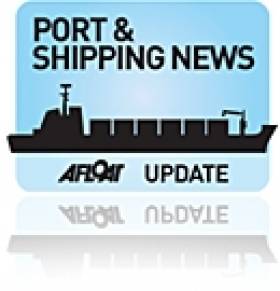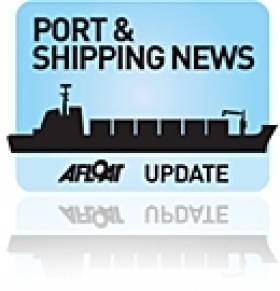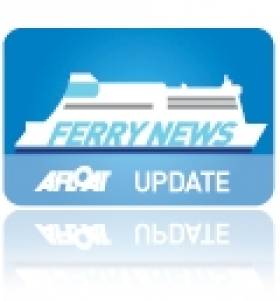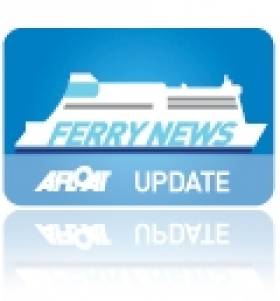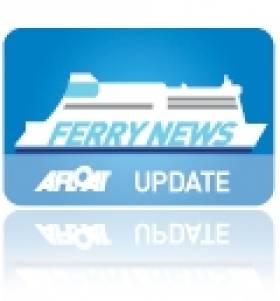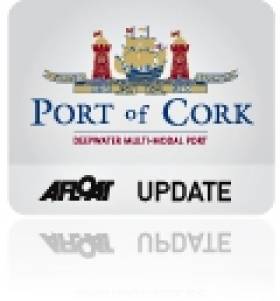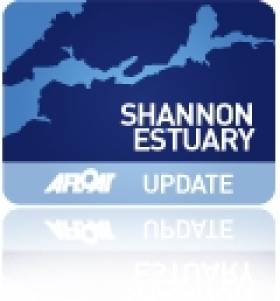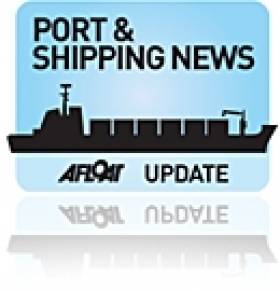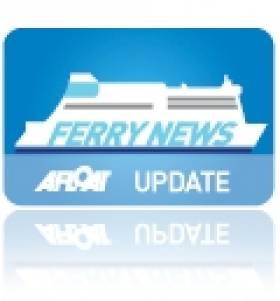Displaying items by tag: Ports and Shipping News
New Zealand Port Orders Container-Carriers from Liebherr’s Irish Plant
#ShippingCRANES- Liebherr's Irish based crane plant in Killarney, Co. Kerry, has received an order for four container carriers from Lyttelton, Port of Christchurch in New Zealand, according to Handy Shipping Guide.
The south island port's freight handling facility, saw a box capacity throughput increase of 16.8% to the end of June 2012.
The order for the four staddle-carrier (SC350T) machines are to be supplied with a 50 foot spreader and will join a pair of Liebherr ship to shore cranes at the port already in situ. The cranes will be linked to a remote container tracking system, providing real-time accurate information on the position and handling rates of containers within the terminal.
On the north island, the port of Tauranga had previously ordered three of Liebherr's Irish-built straddle-carriers and once again this latest order followed detailed evaluations by port engineers and drivers during site visits to existing terminals using Liebherr machines.
Christchurch it seems is recovered from the traumatic scenes witnessed during the earthquakes of two years ago and the new cranes are scheduled for delivery from Liebherr in mid-2013.
Ports & Shipping Review- Research Vessel Returns, Record Cruise Season, Fast & Slow Ferry Refits, Port Upgrade and Riverferry's Fate?
#ShippingREVIEW- Over the last fortnight, Jehan Ashmore has reported from the shipping scene, where the Geological Survey of Ireland (GSI) research vessel Keary, returned to Dun Laoghaire Harbour following modification work at Arklow Marine Services.
A record total of 64 cruiseships are to call to Cork Harbour, making the 2013 season the busiest year to date and includes six maiden calls and two cruiseships will make overnight calls.
The New Year brought changes at Ardmore Shipping, where new promotions have been made for personnel at senior management level.
Not a single fast ferry is to be found operating on the Irish Sea, not to bad weather, but for the brief absence of Irish Ferries Jonathan Swift, currently in refit, from year-round Dublin-Holyhead service.
One of Stena Line's Dublin Port-Holyhead route ships, Stena Nordica is on relief duty, covering for Stena Europe between Rosslare-Fishguard. In place of the 'Nordica' Dublin sailings, the chartered Finnarrow is maintaining sailings to Holyhead.
A major upgrade of the Scottish ferryport of Cairnryan, on Loch Ryan, has begun to improve operations for P&O Ferries short-sea route to Larne.
According to the Port of Cork, a total of 9.05 million tonnes in trade traffic levels was reached at the end of 2012, not since 2008, has the port surpassed 9m tonnes.
Royal Daffodil, one of the famous Mersey Ferries fleet due to be withdrawn, has been discussed with the National Waterways Museum, but no decision has been made as of yet.
The efforts of Cruise Belfast has paid off as the 2013 cruise season is to be a record year with close to 60 calls bringing more than 100,000 visitors to Belfast Harbour.
P&O Invest in Major Upgrade of Scottish Ferryport
#FerryPort – Work has begun on a major upgrade of the Scottish ferryport of Cairnryan, on Loch Ryan, according to The Irish News.
The renovation of part of the P&O Ferries division-owed port comes after rival Stena Line invested millions in its terminal in Belfast. As recently referred on Afloat.ie, Stena also invested heavily in recent years with a brand new facility just outside Cairnryan.
While the project will mean improved services for those using the ferry crossing, it is also good news for the Northern Ireland construction industry. Work will be carried out by Belfast-based civil engineering contractors McLaughlin and Harvey.
A new roll-on and roll-off linkspan is to be installed at the port with work expected to be complete by the end of the year. This replacement floating ramp structure will be used by freight and tourist vehicles shipping with P&O Ferries' services to and from Larne.
Not a 'Fast-Ferry' to Be Seen on the Irish Sea
#DublinSwift – The are currently no fast-ferries operating at all on the Irish Sea, not due to bad weather, but for the annual refit of Jonathan Swift, the only such craft running throughout the year, on Irish Ferries Dublin-Holyhead route, writes Jehan Ashmore.
Irish Ferries which markets the fast-craft as the Dublin 'Swift' is currently undergoing maintenance at the Cammell Laird dry-dock facility, Birkenhead. Her brief absence from the route started during the week, however she to resume service on Tuesday 5 February with the 08:45 sailing from Dublin Port.
Also berthed in Birkenhead, is Irish Ferries cruiseferry Isle of Inishmore, which too is undergoing annual refit. As previously reported on Afloat.ie, the flagship Ulysses, the largest ferry on the Irish Sea, was also refitted at the same facility recently, as she returned earlier this week to the Dublin-Holyhead service.
So where are the rest of the fast-ferries?...well, there's three to be found in 'hibernation' mode. Firstly, facing opposite Birkenhead, the Isle of Man Steam Packet Company's fast-ferry Manannan is laying over for the winter in Liverpool docks, until required to operate routes to Douglas in the Spring.
Stena Line's HSS Stena Explorer is in lay-up at her berth in the inner harbour in Holyhead, where she is to remain until resuming her seasonal-only service starting on 22 March and running through the peak-season until September.
Finally the third fast-ferry, P&O's Express is berthed alongside Donegall Quay, Belfast, though this is not where she operates from, but on the seasonal Larne-Troon service.
Also to be found in Belfast is the laid-up HSS Stena Voyager, one of a trio of HSS 1500 series built in Finland. She became redundant more than a year ago following change of Scottish ferryport from Stranraer to Cairnryan, from where a pair of 'Superfast' ferries operate the North Channel route to Belfast.
Ferry Circles Dublin Bay Buoy in Readiness for Refit
#FERRY REFIT – In readiness for annual refit, Stena Line's Dublin-Holyhead two-ship service, is to be relieved shortly by a chartered Finnish ro-pax ferry, Finnarrow (1996/25,996grt) which carried out 'berthing trials' in Dublin Port yesterday, writes Jehan Ashmore.
When the Stena Nordica (2000/24,206grt) is away in dry-dock, Finnarrow will take her roster in tandem with the route's second ro-pax Stena Advanturer. The relief ferry is owned by Finnlines and she has a 274 passenger capacity, space for 800 cars and can handle 154-freight trailer units.
In order for Finnarrow to perform berthing procedures at the single linkspan used exclusively by Stena Line at Dublin Ferryport (Terminal 2), the Stena Nordica departed the port into the rough sea of Dublin Bay. During this time she circled the Dublin Bay Buoy and throughout the bay, before returning to the berth just vacated by Finnarrow, so to resume her scheduled afternoon sailing to Holyhead.
Finnarrow had earlier this week set sail from the German Baltic Sea port of Travemünde and arrived at the Welsh port on Wednesday lunchtime, where she also undertook berthing trails.
Ironically both Stena Nordica and Finnarrow served together on Stena Line's Karlskrona-Gdyania route several years ago, where the latter vessel was also chartered out on their Harwich-Hook van Holland route.
The Finnarrow, which unusually for a Scandinavian operator, was built in Indonesia, when ordered for original owners Rederi AB Gotland. Under her current role, she is part of the Finnlines (Grimaldi Group) of operations running 14 ro-pax vessels between six countries and eleven ports throughout the Baltic and North Sea.
Cork Cruise Calls Set for Busiest Year
#CruiseLiners – A total of 64 cruiseships are scheduled to call to Cork Harbour, making the 2013 season the busiest year to date for the Port of Cork, writes Jehan Ashmore.
The increase in calls (from 57 in 2012), reflects further confidence of the cruise sector in 2013, where there will be 6 maiden calls to Cork and 2 will stay overnight.
A major coup for Cork is that for the first time, Europe's largest based cruise ship "Independence of the Seas" will welcome passengers to embark directly at Cobh on two cruises. Firstly in June and September, with 12-night cruises touring the Norwegian Fjords, organised by Lee Travel.
The giant vessel of 154,000 tonnes which is operated by RCCL, made her inaugural call to Cork in 2007 when she docked at the dedicated Cobh cruise terminal. From April 2013, the 4,375 passenger ship returns to running summer season cruises from her UK homeport of Southampton.
Cobh will look forward to many other callers throughout the season (cruise caller schedule) and where visitors will be given a very special welcome courtesy of CorkCruise. This is an initiative to provide tourist representatives to go on board each vessel. Following visits to Cobh, Cork City and beyond, a traditional Irish dancing and brass band performance are held on the quayside, as a fond farewell.
The efforts of CorkCruise, were recognised once again in 2011 when the Port of Cork was awarded two Cruise Insight Awards for 'Best Shore Side Welcome' and 'Best Tour Guides' which were announced at the global shipping conference, Seatrade Miami in April 2012.
#PORTS & SHIPPING REVIEW - Over the last fortnight, Jehan Ashmore has reported from the shipping scene, where a brand new multi-purpose heavy-lift vessel Abis Dublin made her maiden 'Irish' call to her namesake port carrying wind-turbine components.
In this year of The Gathering, Dublin Port is to welcome a record number of cruiseships, with more than 100 calls this season to include several new operators.
The fleet of Irish Ferries vessels are taking turns to undergo dry-docking maintenance at the Cammell Laird facility in Birkenhead, where French routes cruiseferry Oscar Wilde is due next month.
The tug that 'righted' the Fastnet Race entrant Rambler 100 in west Cork in 2011, had recently towed a completely different type of vessel, Skerchi, a construction barge to Dublin Port, where the vessel is currently in dry-dock.
Galway Harbour is to welcome The World, the 41,188 tonnes exclusive ultra-luxury residential passenger ship when she opens the 2013 cruise season in July with a two-night anchorage call.
Having operated 12 days of Christmas service, Stena Line's HSS Stena Explorer is taking a break off-service, however, the fastcraft returns for a second year operating a seasonal-summer only schedule.
Shannon Foynes Port Company's draft masterplan "Vision 2041" is to develop port infrastructure and services of the estuary over the next three decades.
Once again the former Dutch dredger Lough Foyle has been contracted by Drogheda Port Company to carry out work at to the mouth of the Boyne.
An extra 3,000 'coach' passengers will have an opportunity to visit Ireland as part of an Irish Ferries initiative worth up to EUR60,000 to promote the nation to UK and overseas tourists.
London 2012, a 82,562 dwt bulk-carrier which after docking at Auginish on the Shannon Estuary, recently weighed anchor offshore of the world famous Ballybunion Golf Course. At the next Olympics of Rio de Janeiro 2016, golf will return to the Games.
Masterplan Sets Out 30 Year Vision for Ports on Shannon Estuary
#SHANNON PORTS- A draft masterplan Vision 2041, to develop port infrastructure and services for the Shannon Estuary over the next three decades, has been published by Shannon Foynes Port Company (SFPC).
The masterplan for Ireland's second largest port which has six terminals along the 500sq km navigable estuary, has specifically targeted growth and expansion options. Also identified are capacity and associated port infrastructure requirements, where SFPC has called for improved road and rail access.
In addition the masterplan is to take into consideration of non-core assets facilities at Foynes Port and Limerick Docks which consists of the single (Ted Russell) Dock basin.
Vision 2041 recognises the strategic need of the estuary to be in position to ensure future capability in handling larger trade volumes efficiently and competitively when the opportunities arise.
The masterplan has concentrated in identifying three key major objectives:
Significant expansion and infrastructural development in the deepwater Port of Foynes
Promoting non-core assets in Limerick Docks for alternative port / non port related activities
Managing the natural attributes of the estuary and its destination as an Ocean Energy Hub
The objectives of Vision 2041 are to realise the economic potential of the natural resource along the Shannon Estuary and developing positive promotion of the ports as a strategic economic driver for the Mid-West Region.
Copies of the SFPC Vision 2014 masterplan can be downloaded from clicking this LINK or alternatively a digital copy can be requested by contacting the Masterplan Team at 069 73100. The deadline for written submissions concerning the draft Masterplan is up to and incl. 1st February, see website for postal address and email details.
Brand New Cargoship Makes Maiden ‘Irish’ Call to Namesake Port
#NEWBUILD VOYAGE- As previously reported on Afloat.ie Abis Dublin, a brand new multi-purpose heavy-cargoship made her maiden 'Irish' port of call to her namesake port yesterday, writes Jehan Ashmore.
The D-class 6,000 tonne newbuild had docked in Dublin Port having spent the previous night at anchor in Dublin Bay. On board the Dutch built vessel, operated by Abis Shipping, wind-turbine components could be seen at the aft end of the ship, noting her superstructure is located well forward close to the bow.
Abis Dublin was delivered earlier this month from shipbuilder's in Harlingen, where her owners are based and where the vessel is registered. Her first actual commercial sailing took place earlier this month, between Vlissingen to Emden, with an inaugural cargo of windmill components, which were later unloaded on arrival in Rouen. From the River Seine she then departed bound for Dublin, where the vessel is berthed alongside Ocean Pier.
Her sister Abis Dover, the leadship of the new class series made a call with B-class Abis Belfast last month, again to discharge windmill components. The latter vessel made a further call to the capital port just before Christmas, such activity reflecting the expanding Irish renewables energy sector.
Ferry-Go-Round in Run-Up to Boost Capacity for Christmas
#FERRY BOOST - Irish Ferries French route cruiseferry Oscar Wilde as previously reported is to undergo its annual dry-dock maintenance next month, however, she is to operate Christmas and New Year sailings between Rosslare-Pembroke Dock, writes Jehan Ashmore.
In mid-October Afloat.ie reported that the Welsh route cruiseferry Isle of Inishmore is to transfer to Dublin-Holyhead route to boost capacity over the busy festive season.
Each of Isle of Inishmore's sailings will provide space for an additional 2,200 passengers and more than 850 cars. She will join the central corridor route's cruiseferry Ulysses and fast-ferry Jonathan Swift otherwise marketed as the Dublin Swift. For sailing schedules including separate panel for sailings served by Isle of Inishmore click this LINK.
Irish Sea rivals Stena Line are to bring back HSS fast-craft Dun Laoghaire-Holyhead sailings for 12 days over the festive and New Year period, for schedule click HERE. In addition Stena also operate year-round Dublin-Holyhead sailings using two conventional ferries marketed as Superferries.


























